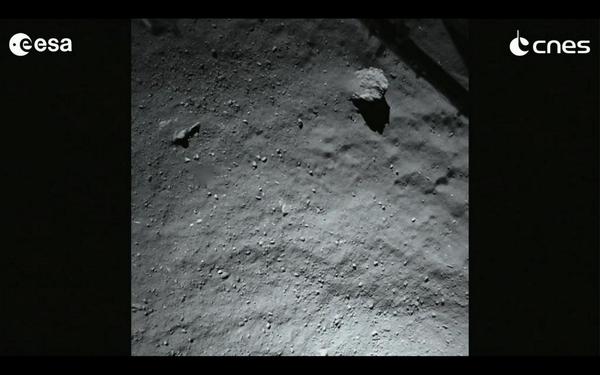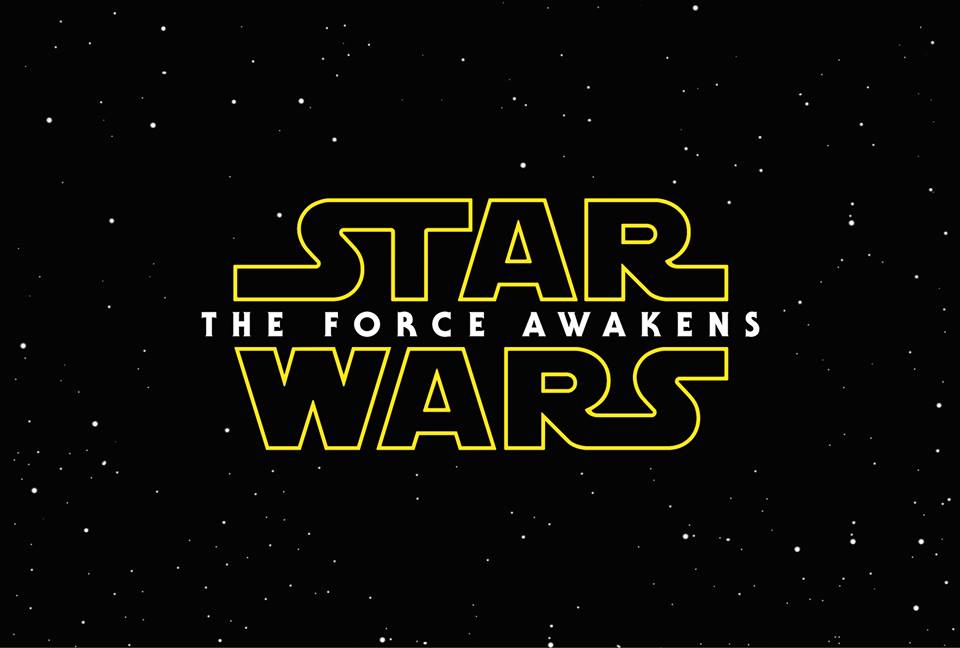 Photo by ESA/Rosetta/Philae/ROLIS via CNES
Photo by ESA/Rosetta/Philae/ROLIS via CNES
That image above is an up-close-and-personal look at the surface of a comet, taken this morning by a tiny lander called Philae moments before it made contact with that ancient chunk of ice and rock. Philae spent 10 years traveling through deep space to make this rendezvous, carried aboard the European Space Agency’s Rosetta probe. After a circuitous route that required a couple of slingshot maneuvers past Mars and Earth, as well as fly-bys of two different asteroids, Rosetta finally came alongside Comet 67P/Churyumov-Gerasimenko, some 311 million miles from Earth, back in August. Since then, it has been slowly moving in closer, mapping the comet’s terrain as it went. And then this morning, it released Philae for a seven-hour journey down to 67P. Other space probes have done close fly-bys of comets, and we even slammed a projectile into one back in 2005, but this is the first time we’ve gently set anything down on one.
Even leaving aside the historical-first aspect of this landing, it’s an incredible feat of navigation. Consider: 67P is only two-and-a-half miles across, and it’s speeding around the sun at roughly 85,000 mph. Imagine trying to hit a target that small and that fast in all that infinite emptiness with a spacecraft — Rosetta — that’s only 105 feet across its solar-panel wingspan. The mind boggles. And then there are the problems of actually landing on a comet. For one thing, 67P isn’t even a sphere, like a planet. Most of the descriptions I’ve read compare its shape to a rubber duckie: two irregularly shaped “lobes” stuck together. Because it’s so small, it has hardly any gravitational pull; Philae weighs only half an ounce when it’s on the surface of 67P. And the comet is outgassing, meaning its icy components are evaporating and venting off into space, which means, in that super-low gravity, that the comet can literally blow Philae away. To counter this, Philae has a cold-gas thruster on top intended to hold it against the comet’s surface while two anchoring systems — harpoons and ice-screws in its landing pads — dig in and make the lander fast. Unfortunately, it appears that these systems didn’t work quite as hoped: the thruster failed to properly pressurize as the lander was preparing to depart Rosetta, and the harpoons did not fire once it reached the surface. Last I heard, ESA scientists were still trying to verify whether or not the ice-screws had attached themselves, which means the lander could be just floating alongside the comet, or in danger of drifting away from it. But it definitely did make contact… in fact, it appears that Philae bounced and settled back to the surface at least once, so it made contact a couple of times.
Communications with the lander have been intermittent, for undetermined reasons, but ESA has confirmed it is on the surface, and it is functioning, so with luck we should start getting some interesting data back any time. Philae carries a suite of 10 scientific experiments, including a drill to take a core sample and an onboard laboratory to analyze it. Its primary mission is scheduled to last a couple of days, then — depending on how well the lander is able to recharge its batteries — a secondary phase will begin that could last until March of next year, after which conditions will likely be getting too hot for it to continue functioning as 67P plunges toward the sun.
I’m excited to see the planned panoramic photograph of the landing area, but in the meantime, feast your eyes on this gallery from The New York Times, including lots of shots of the comet taken as Rosetta approached.
One final thought: As exciting as this landing has been, a friend of mine lamented over on Facebook earlier that there was a time when this would have been an American achievement instead of a European one. I understand what he was getting at. I’m not really prone to nationalism myself, but when it comes to space stuff… well, I do take a lot of pride in the fact that it’s an American flag up there at Tranquility Base, and that we were the first nation with a reusable spaceship. But as someone else pointed out on that Facebook thread, it’s better for the countries of the world to work together on missions like this than to compete like we did in the Cold War days. (NASA did, in fact, contribute to the Rosetta mission.) For one thing, sharing the costs is the only practical way around the enormous expense of space exploration. But more generally, I also think it’s simply right that we all work together for this. If space exploration is truly “for all mankind,” if our ultimate goal is to make humanity an interplanetary species, then all of humanity needs to be involved and represented in what we’re doing out there. The first moonbase or Mars colony, ideally, ought to include Americans, Europeans, Asians, Indians… and Russians… Christians, Jews, Hindus, Buddhists, atheists, and yes, Muslims, too. This is the ideal established by Star Trek and Babylon 5, and it’s the one I dream we’ll achieve. Chances are we won’t, of course. I’m not so naive as to believe reality isn’t going to end up a lot messier than Star Trek ever was, and there will no doubt be some ventures where nations cooperate and others where they don’t. (I foresee that asteroid mining, if it works out, will probably be intensely nationalistic and/or corporate, with different organizations laying claim to specific rocks… hopefully peacefully, but not necessarily…) But hey, let’s at least try for the dream. It worked out pretty damn well this morning, didn’t it?



 http://imgs.xkcd.com/comics/turnabout.png
http://imgs.xkcd.com/comics/turnabout.png